Tucked into the quiet streets of Uçhisar, just a short walk from the town’s castle and sweeping valley views, House of Memories is the kind of restaurant you end up returning to more than once. Partly for the food, partly for the atmosphere, but mostly for the warmth of its owner, Bayram.
Bayram is a man who seems to carry the sun with him—always smiling, always ready for conversation, and endlessly generous with his hospitality. Scroll through online reviews of the restaurant and you’ll see his name mentioned again and again, a constant thread of warmth woven through people’s experiences. Meeting him in person is no different. There’s a rare contentment in the way he moves around his space—a simple joy in making good food for good people.
His regular menu has a handful of vegan-friendly dishes—crisp salads, golden fries, stuffed vine leaves, and sometimes a hearty bean stew—but the true highlight for us was something not on the menu: a vegan version of Cappadocia’s iconic clay pot dish.
Preparing the clay pot
Traditionally, the Cappadocian clay pot—or testi kebabı—is made with meat. The vegetables, herbs, and broth are sealed inside a small clay jug and slow-cooked over fire for hours. But when we asked if it was possible to make a completely vegan version, Bayram didn’t hesitate.
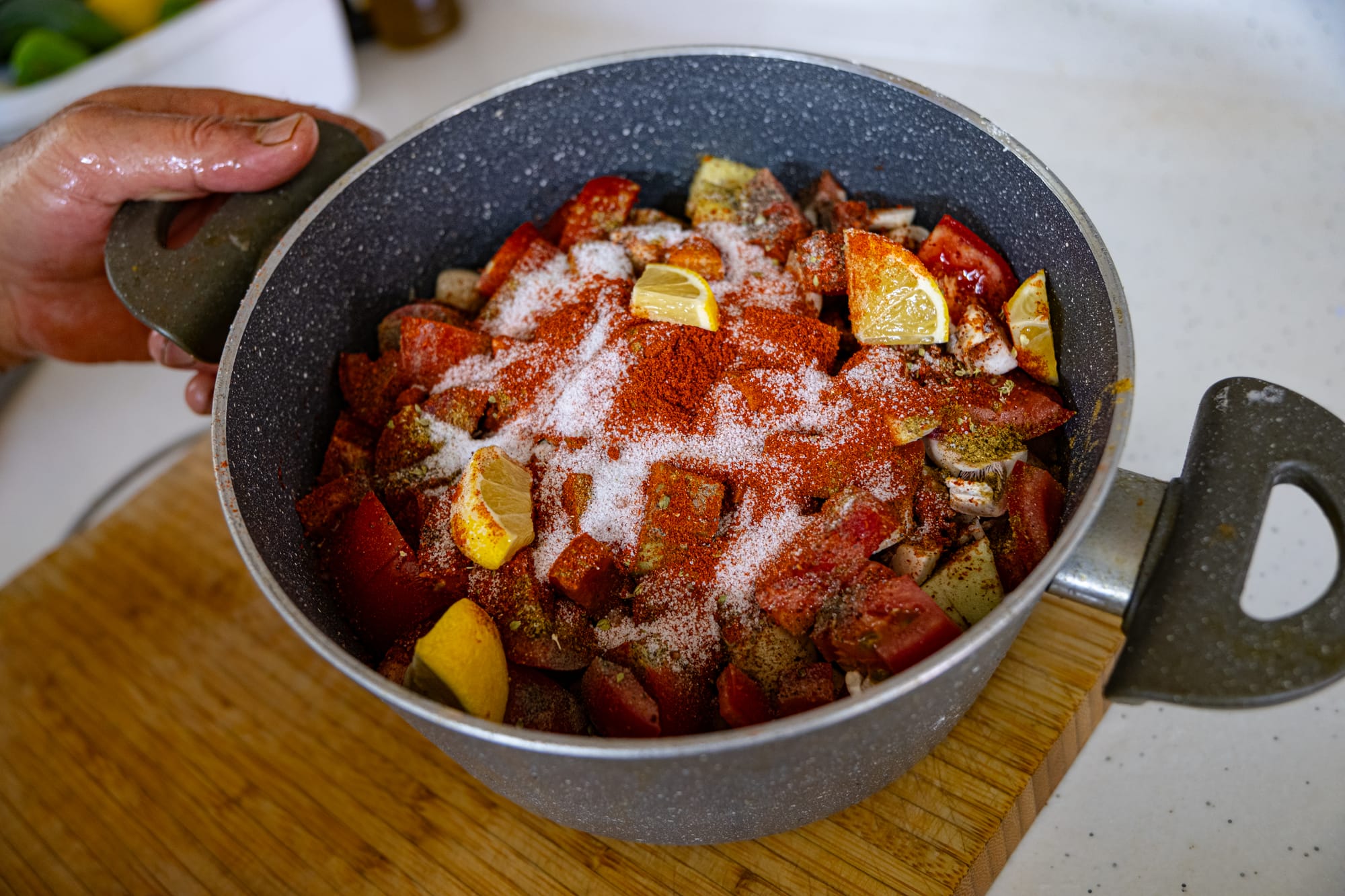
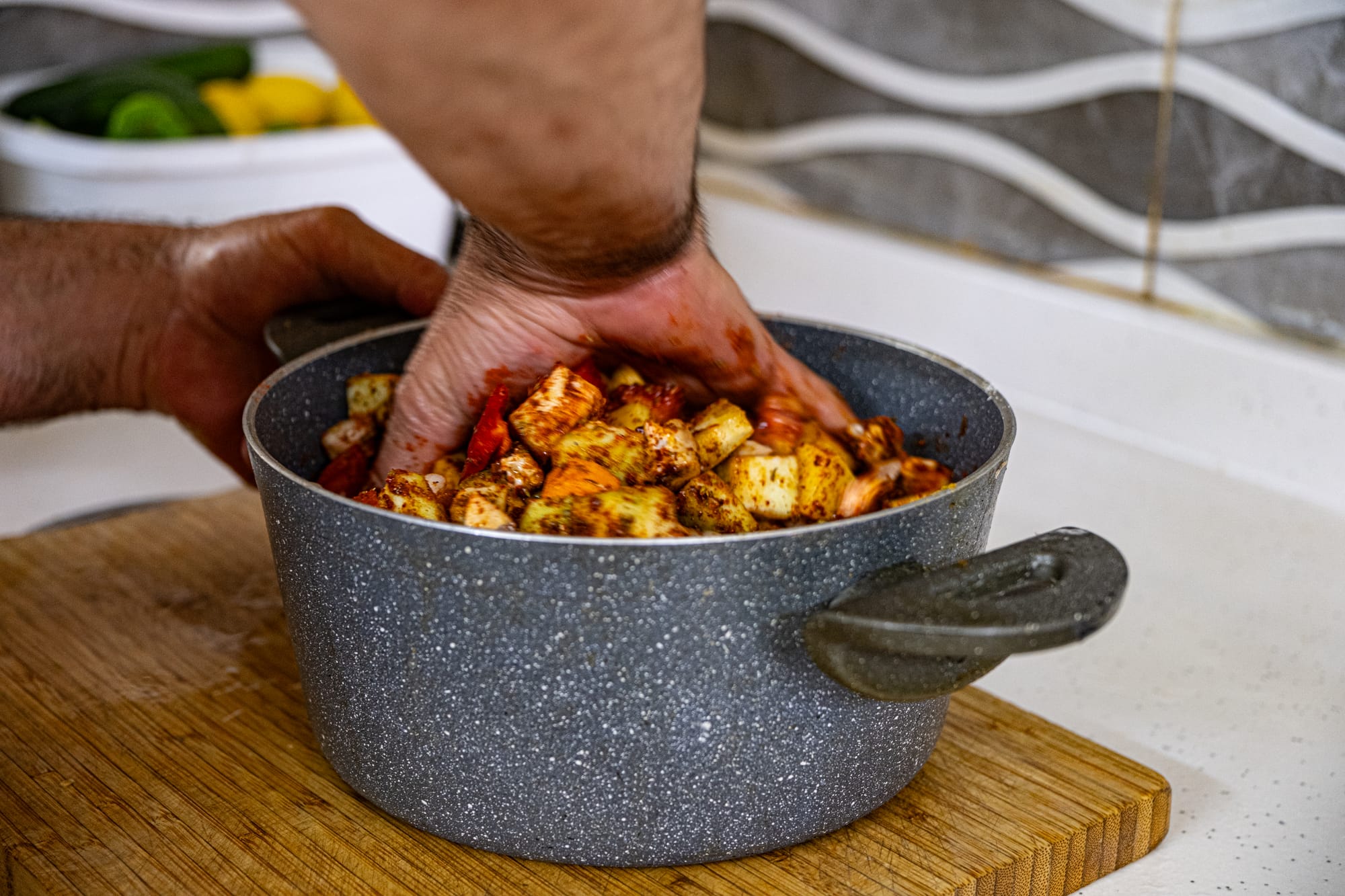
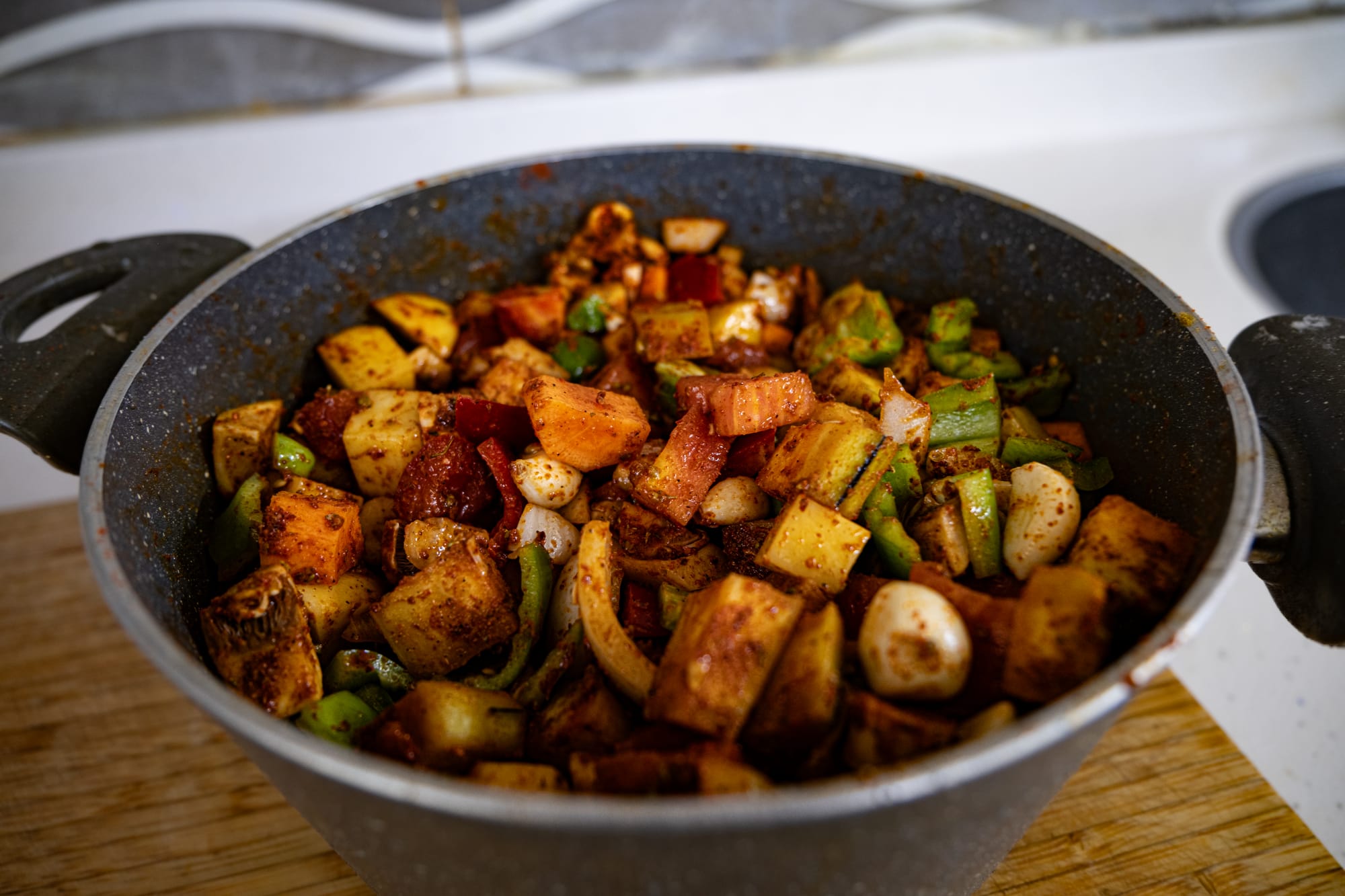
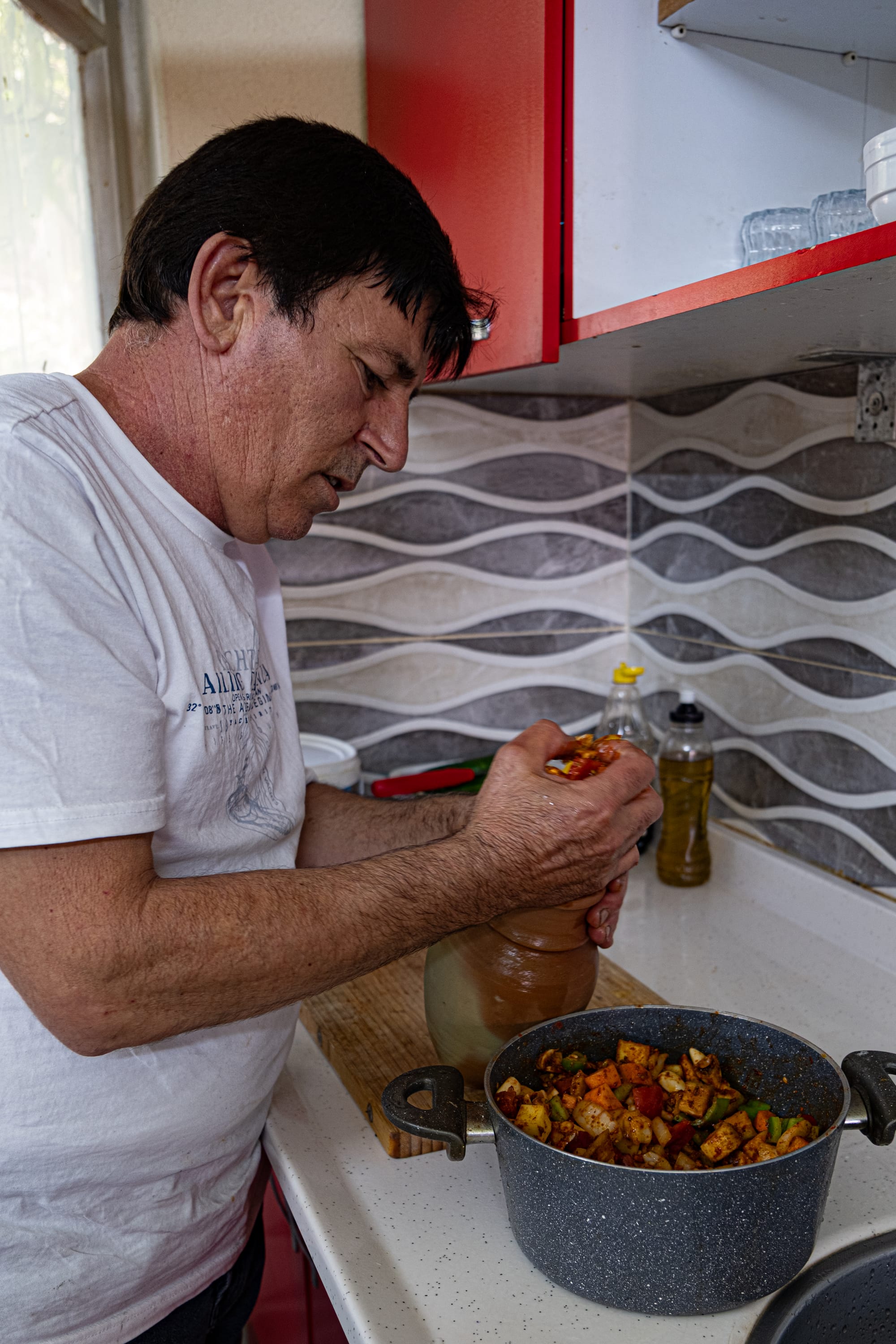
Bayram prepares the vegan clay pot by hand, layering fresh vegetables, garlic, lemon, and spices into a rich, colorful mix
In the kitchen, he began by chopping a generous selection of vegetables—tomatoes, peppers, carrots, potatoes—layering them with whole cloves of garlic, fresh lemon wedges, and a scattering of spices. Paprika dusted the top like a red veil; salt and herbs mingled in the folds. He mixed everything by hand, pressing the flavors into the vegetables so the juices would form a natural marinade.
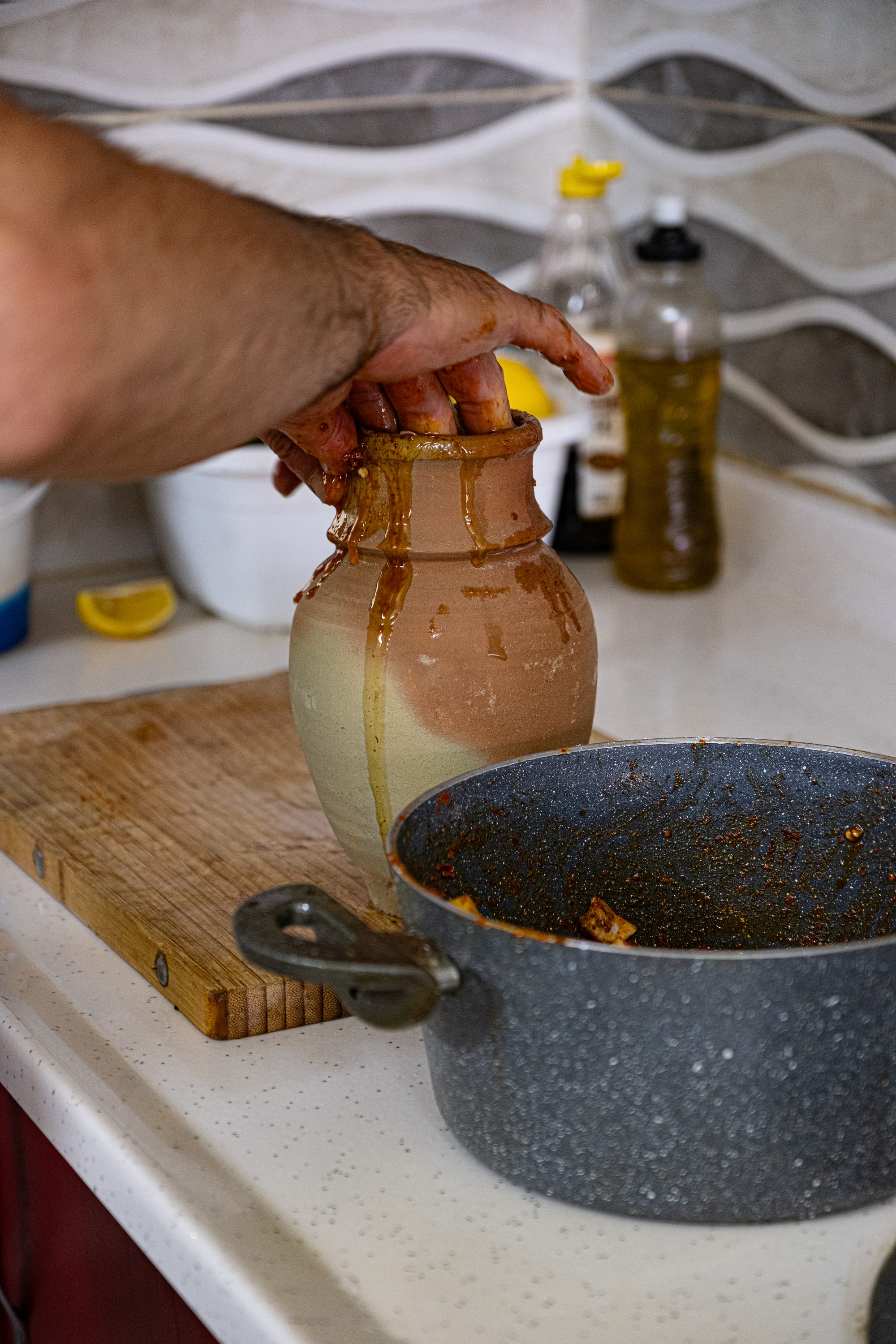
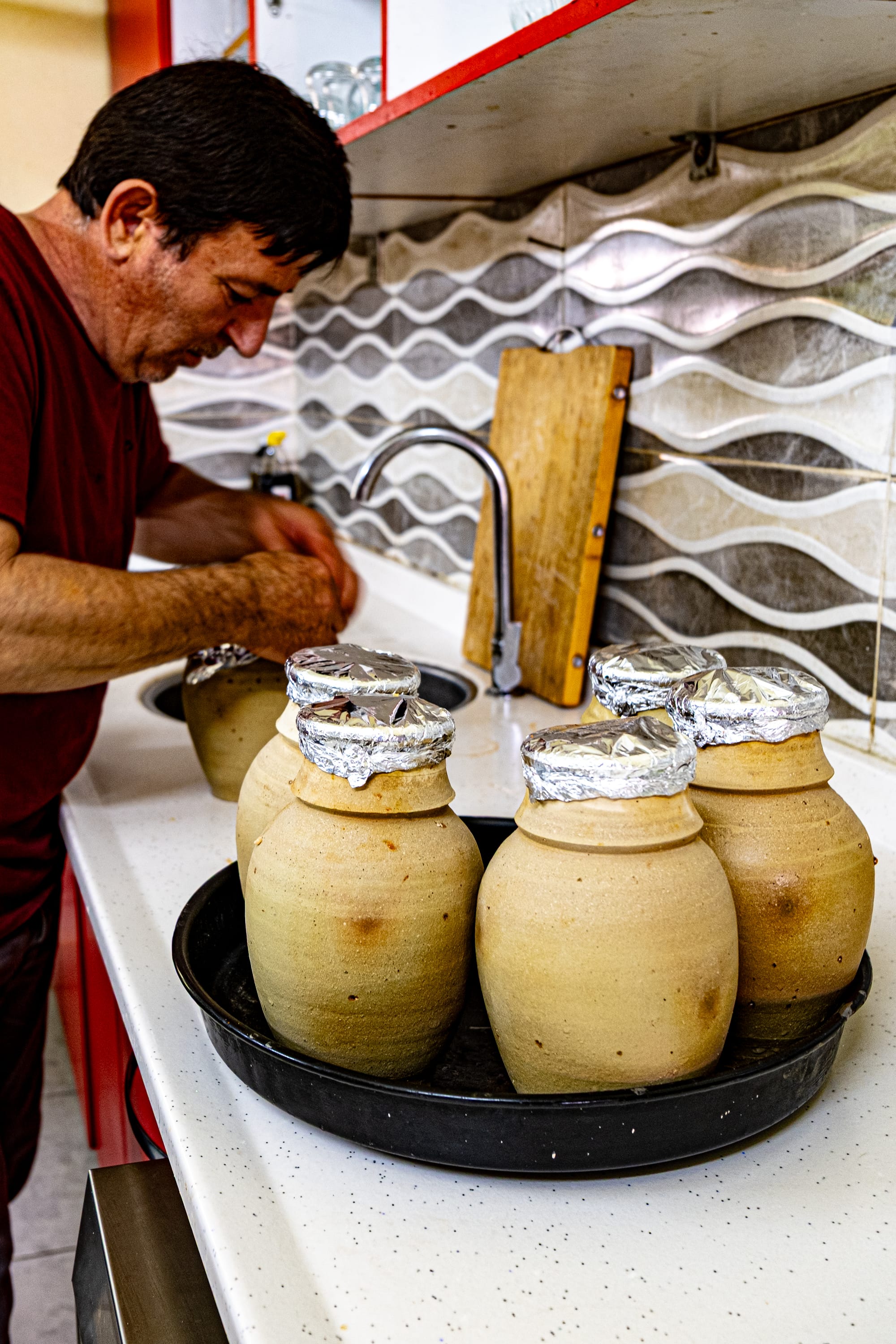
Filling each Avanos-made clay pot to the brim, Bayram seals the spiced vegetable mixture with foil
Next came the pots themselves—beautiful, rounded vessels sourced from Avanos Pottery Village, where generations have shaped clay from the Kızılırmak River into both art and everyday tools. Bayram filled each one to the brim with the vegetable mixture, then sealed the mouth with foil to trap every drop of steam and flavor.
Cooking over charcoal
Outside, a small charcoal oven glowed with steady heat. The pots were arranged inside, nestled close together so they could share warmth. Once in place, they would stay there for hours—at least four—slowly transforming under the constant attention of the fire.
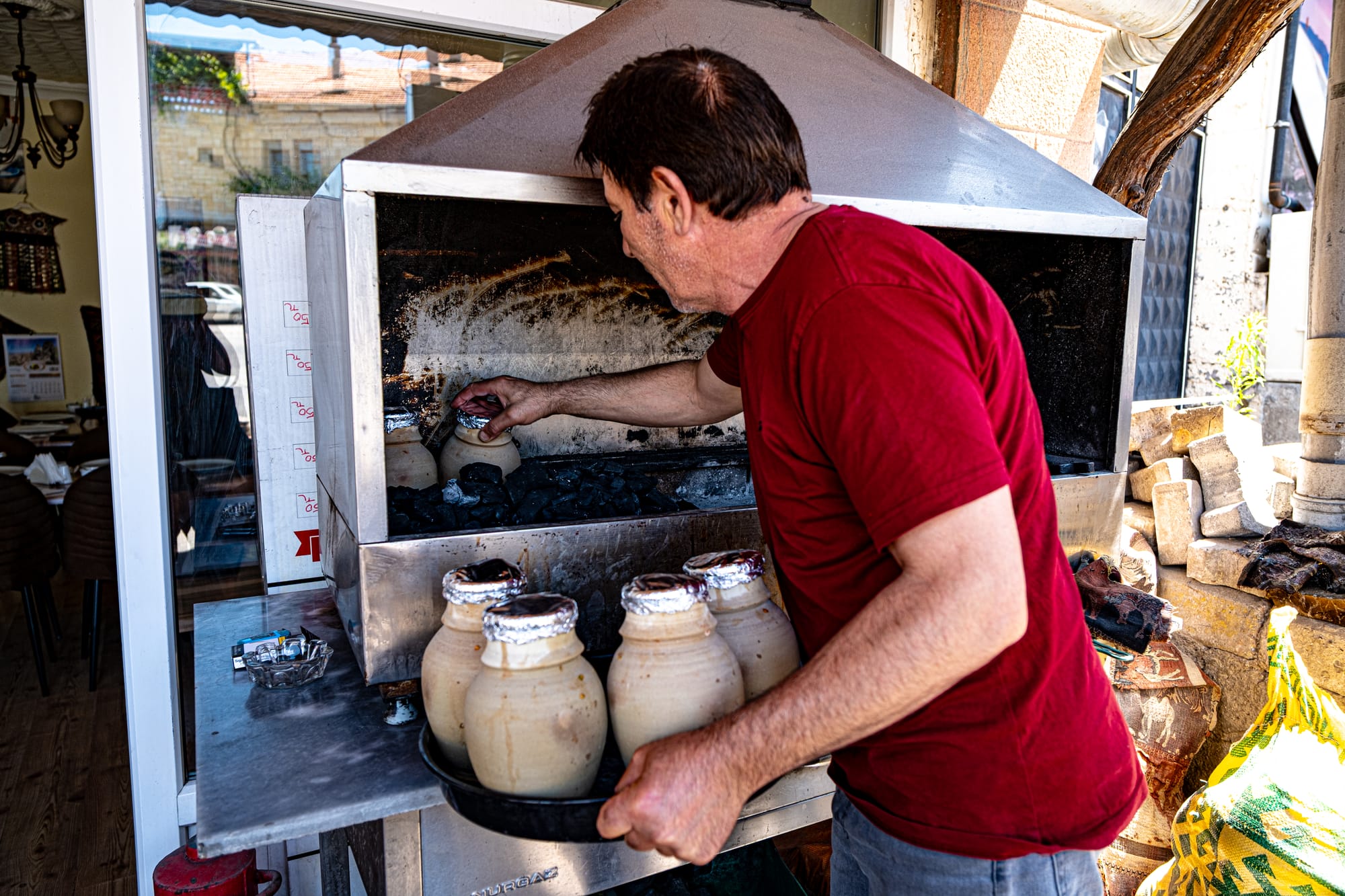
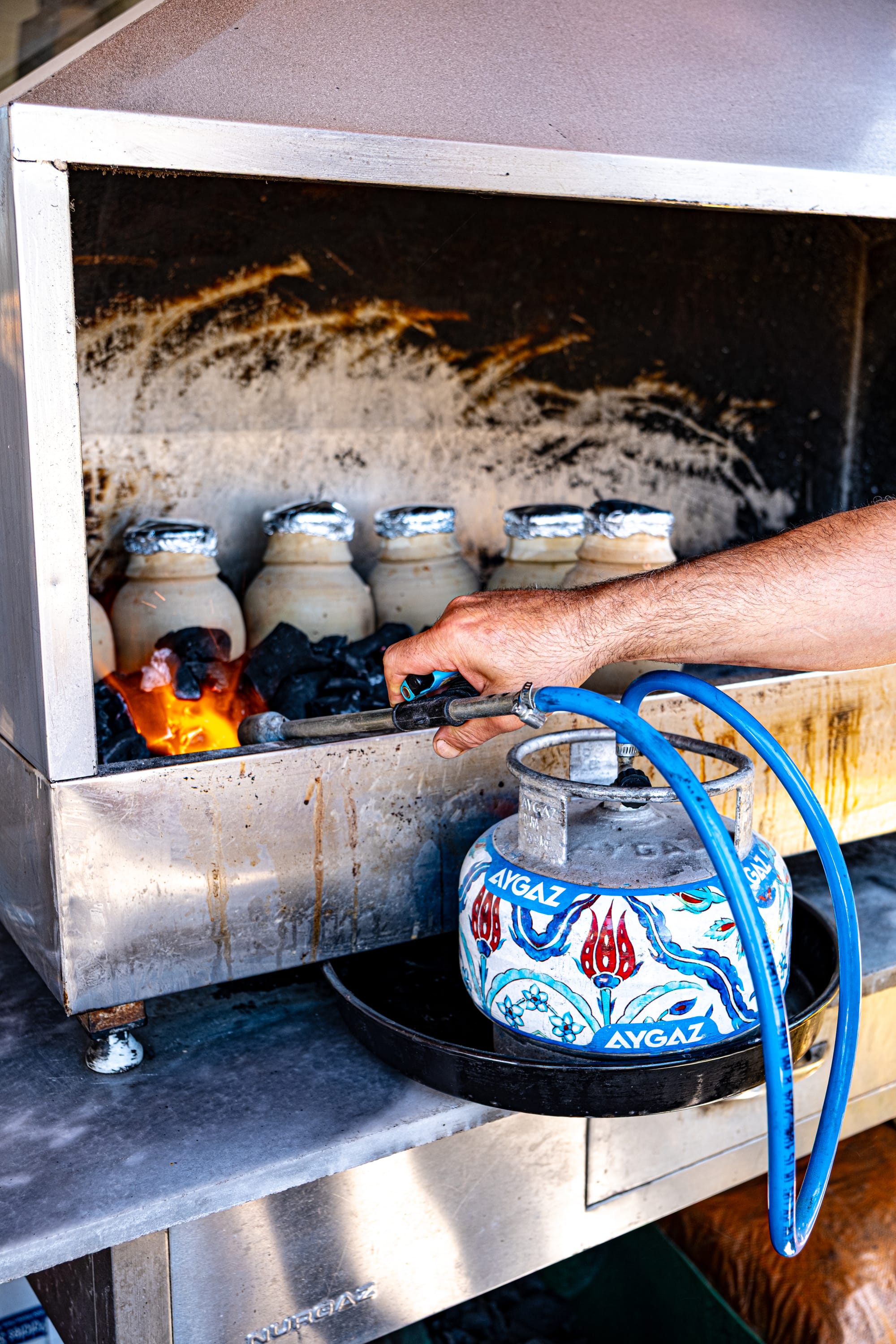
Bayram carefully loads the sealed clay pots into a charcoal oven, tending the fire to ensure the vegetables inside slow-cook evenly
Throughout the day, Bayram would tend to them, shifting their positions so each cooked evenly, occasionally adding more coals to keep the heat just right. The sealed clay acted as both oven and cauldron, turning the vegetables tender and infusing them with a rich, smoky depth.
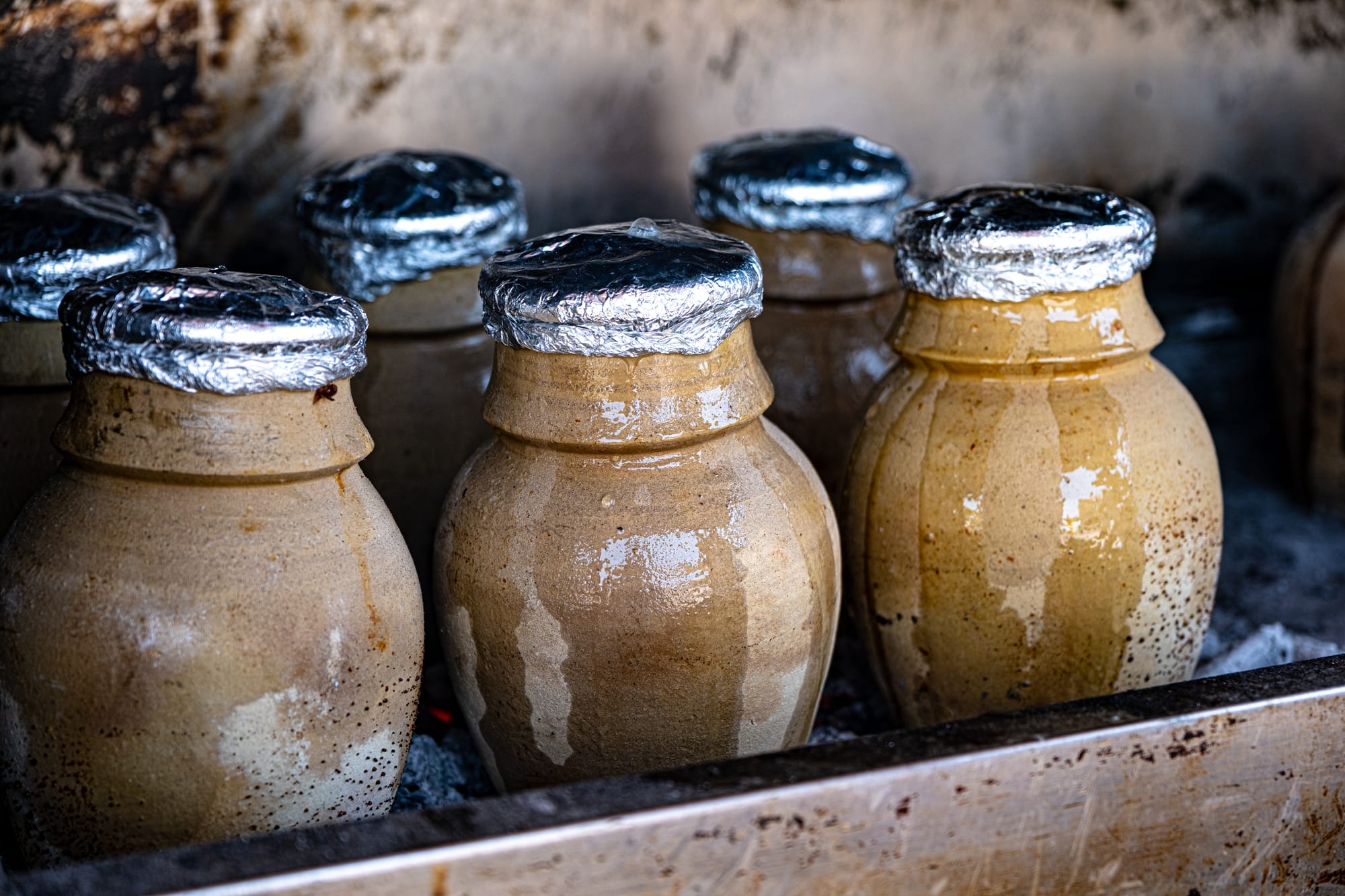
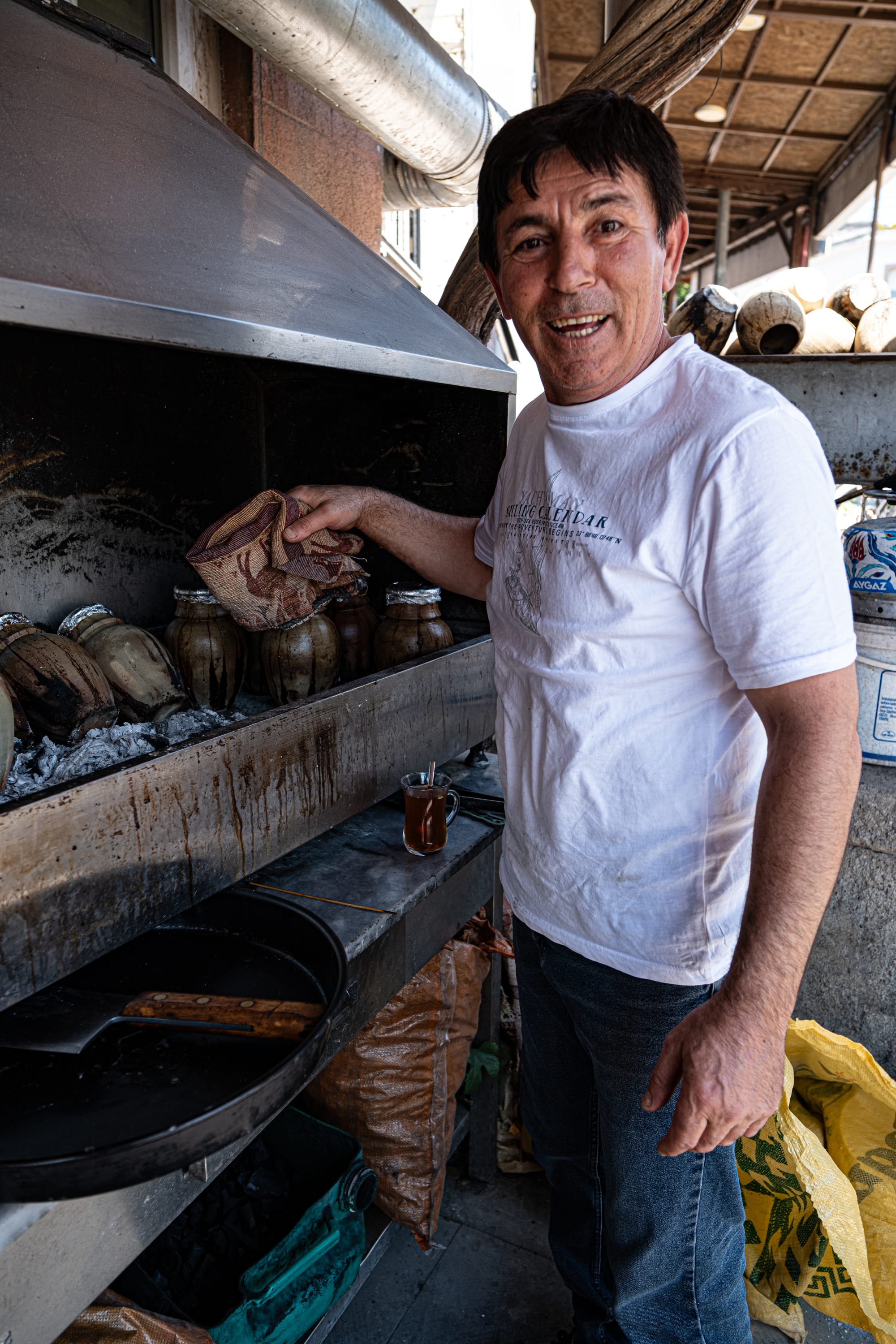
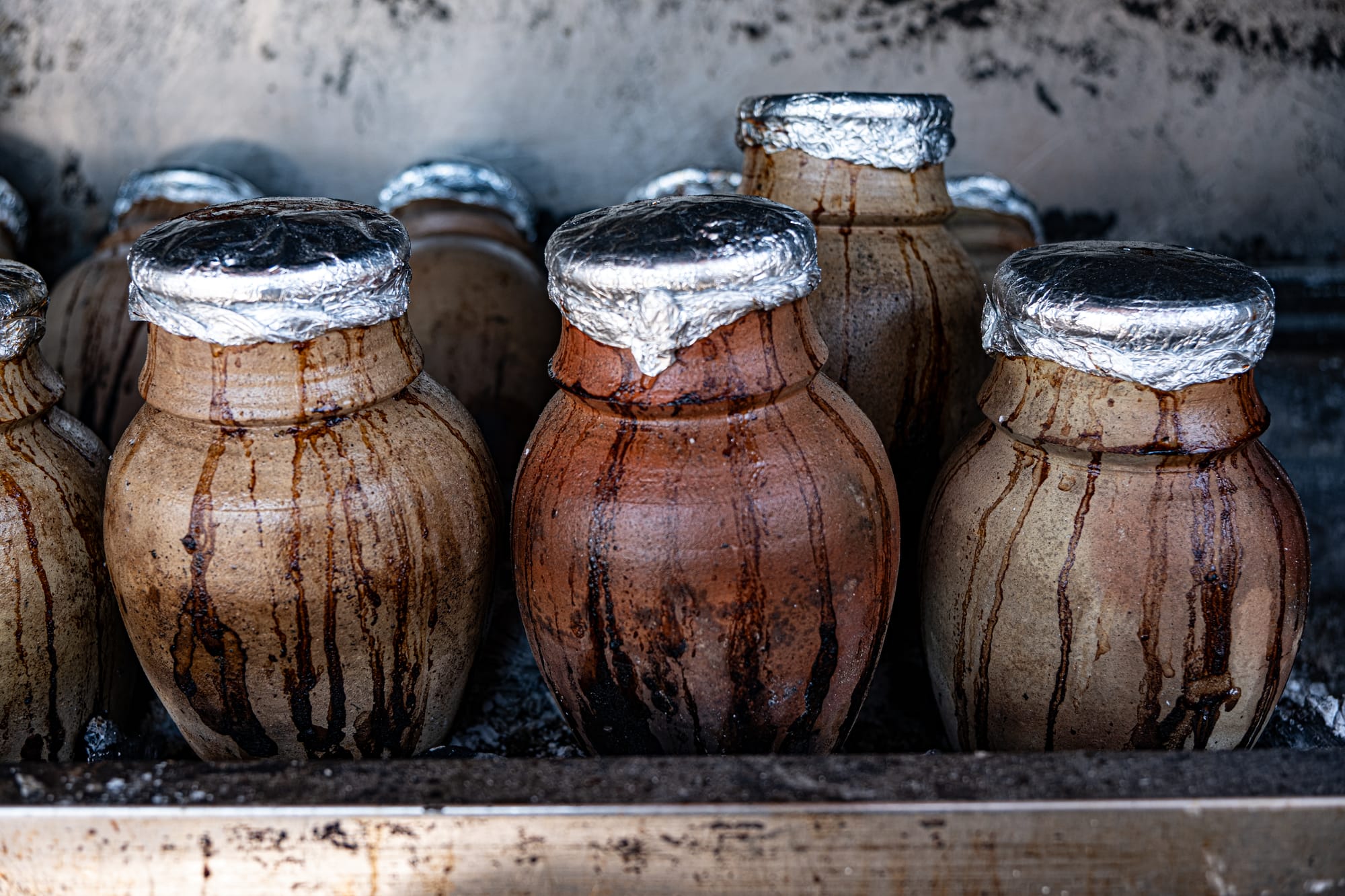
Around the cooking area, a different kind of still life took shape: stacks of emptied pots, a few reimagined as planters with green shoots spilling over the rim.
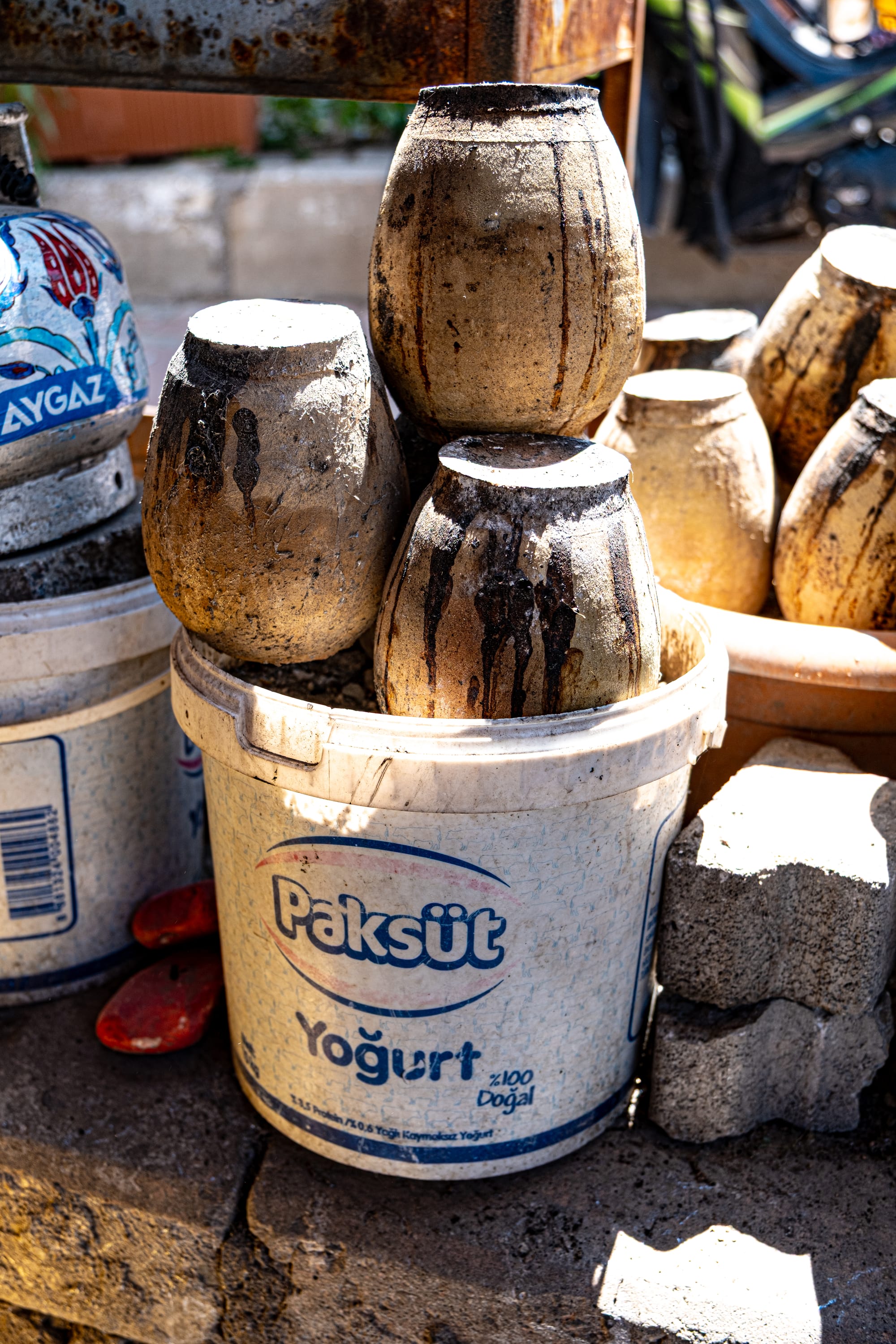
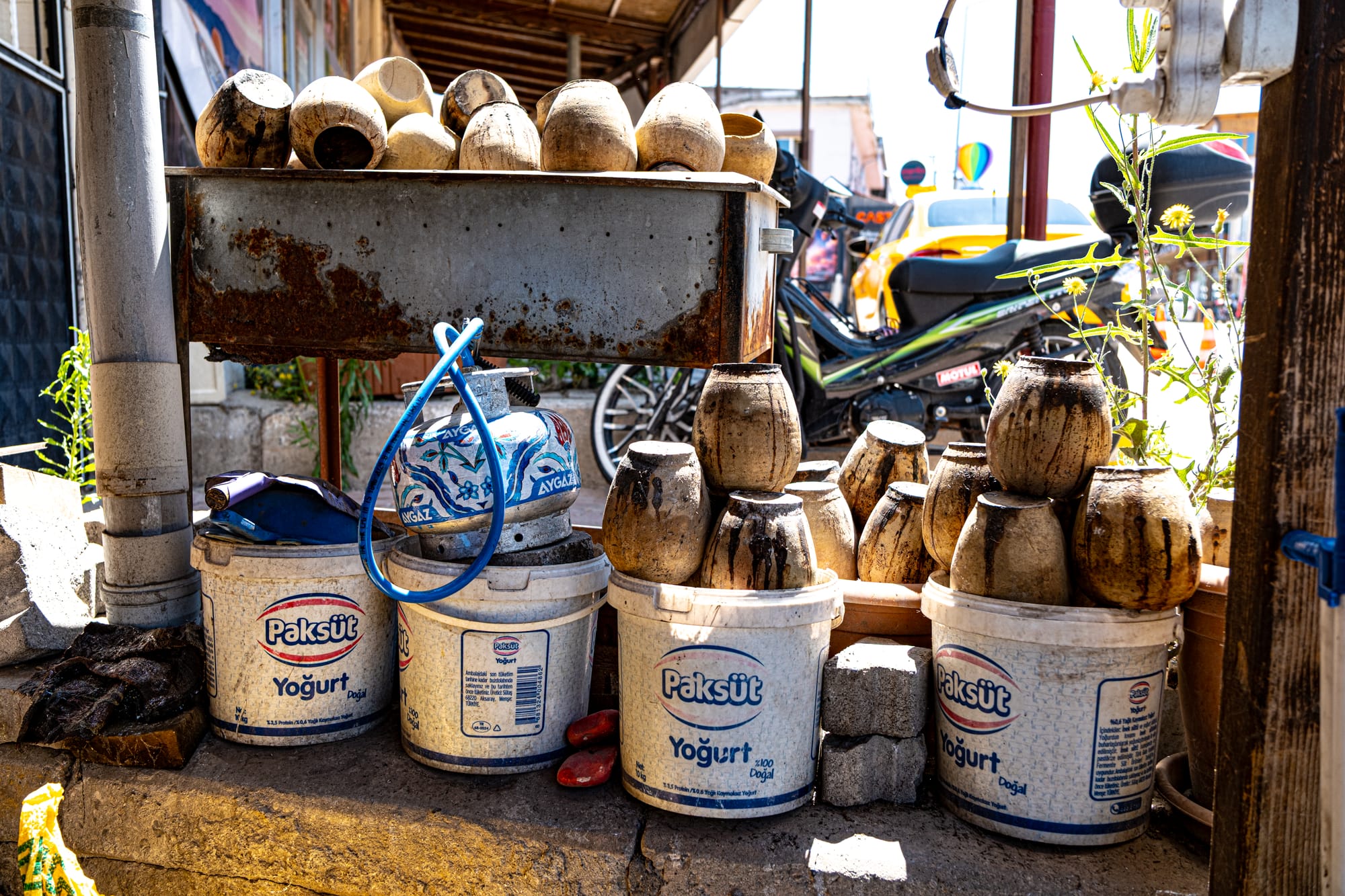
Stacks of clay pots rest in repurposed yogurt tubs outside the restaurant, a quiet record of the dishes cooked and shared here
It was a quiet reminder of the lifecycle of this dish—from raw clay to kitchen vessel to a part of the restaurant’s decor.
Cracking open the pot
When the time came to serve, Bayram brought the steaming pot to the table, its surface still warm from the fire. With practiced hands, he cracked the clay seal, letting a plume of fragrant steam escape.
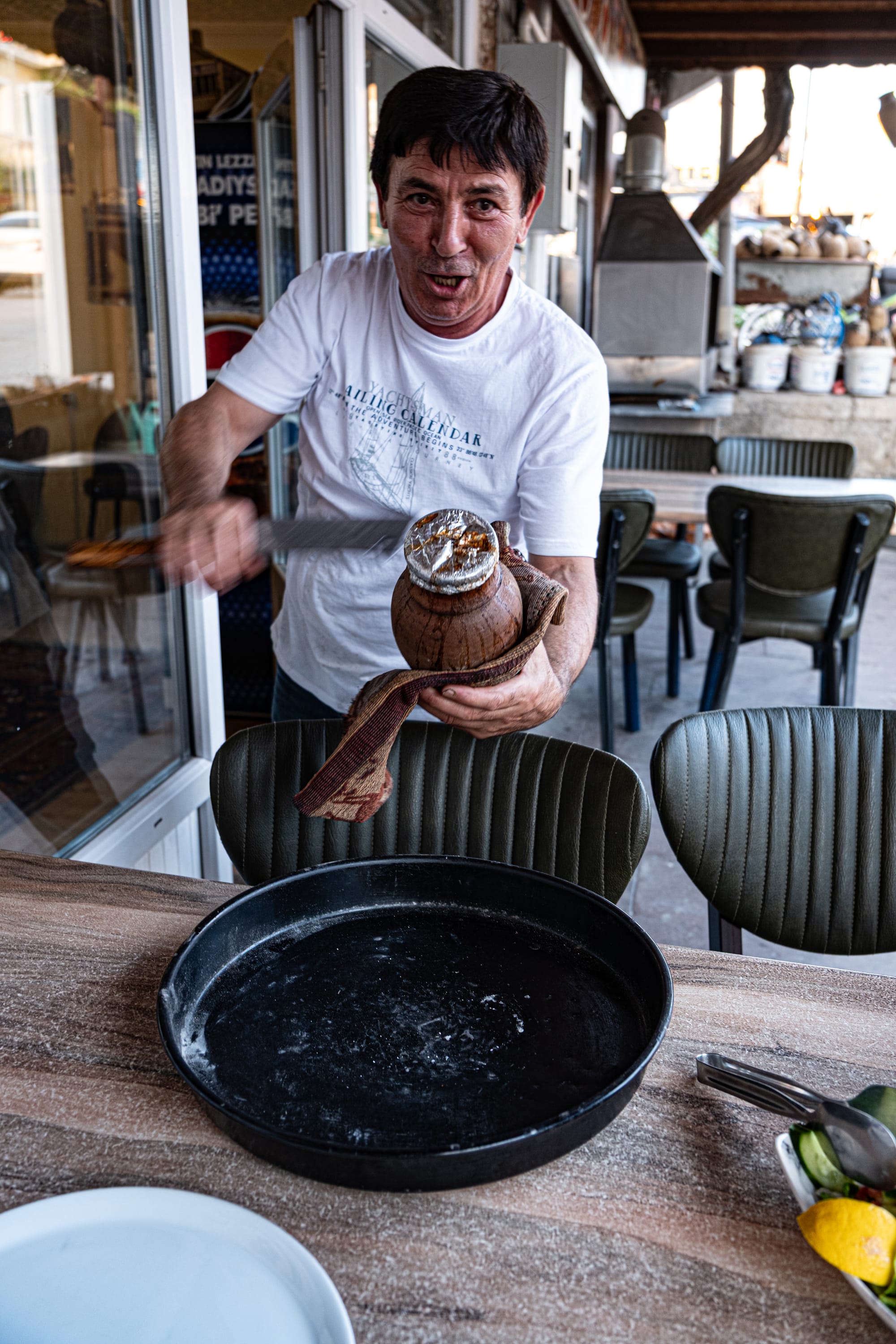
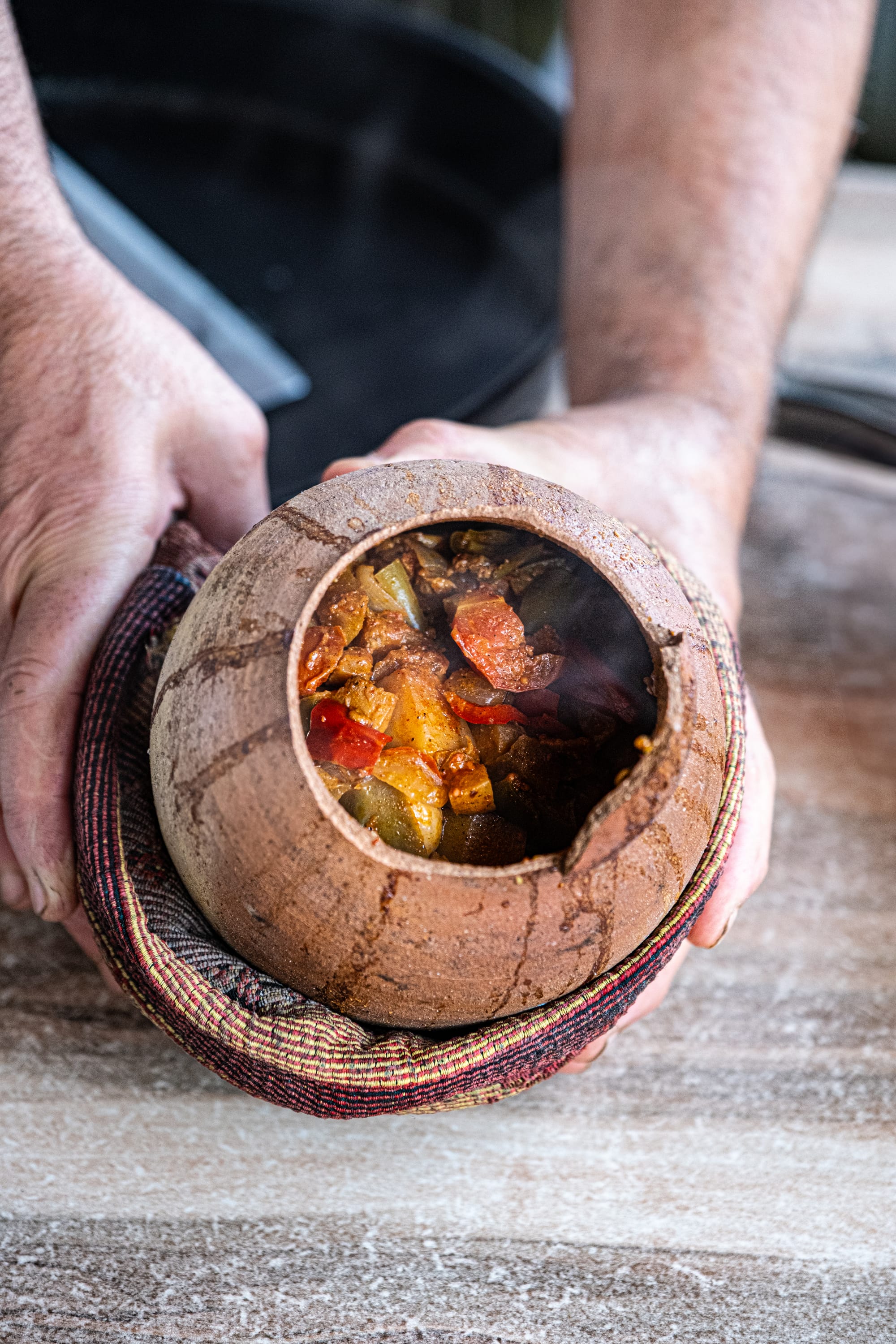
Bayram cracks open the clay pot to reveal a steaming, fragrant stew of tender vegetables, ready to be served
Inside, the vegetables had melted into a rich stew, each piece holding the essence of the others—garlic perfuming every bite, lemon brightening the deeper flavors of the peppers and tomatoes.
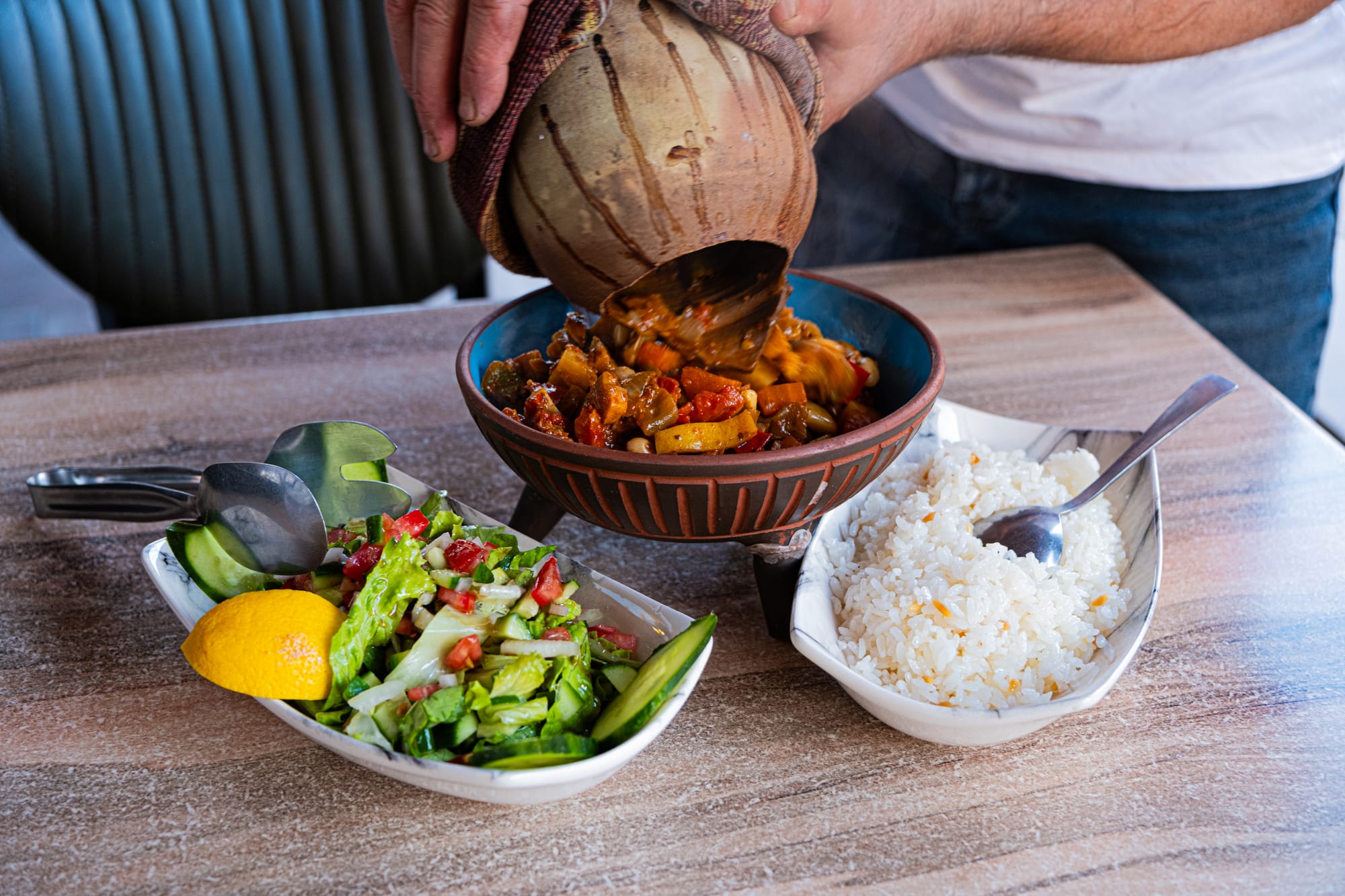
He poured it into a deep bowl, serving it alongside fluffy white rice and a fresh salad scattered with chopped tomatoes, cucumbers, and parsley. The first spoonful was all comfort—soft vegetables bathed in a broth that felt both hearty and clean, rich without heaviness.
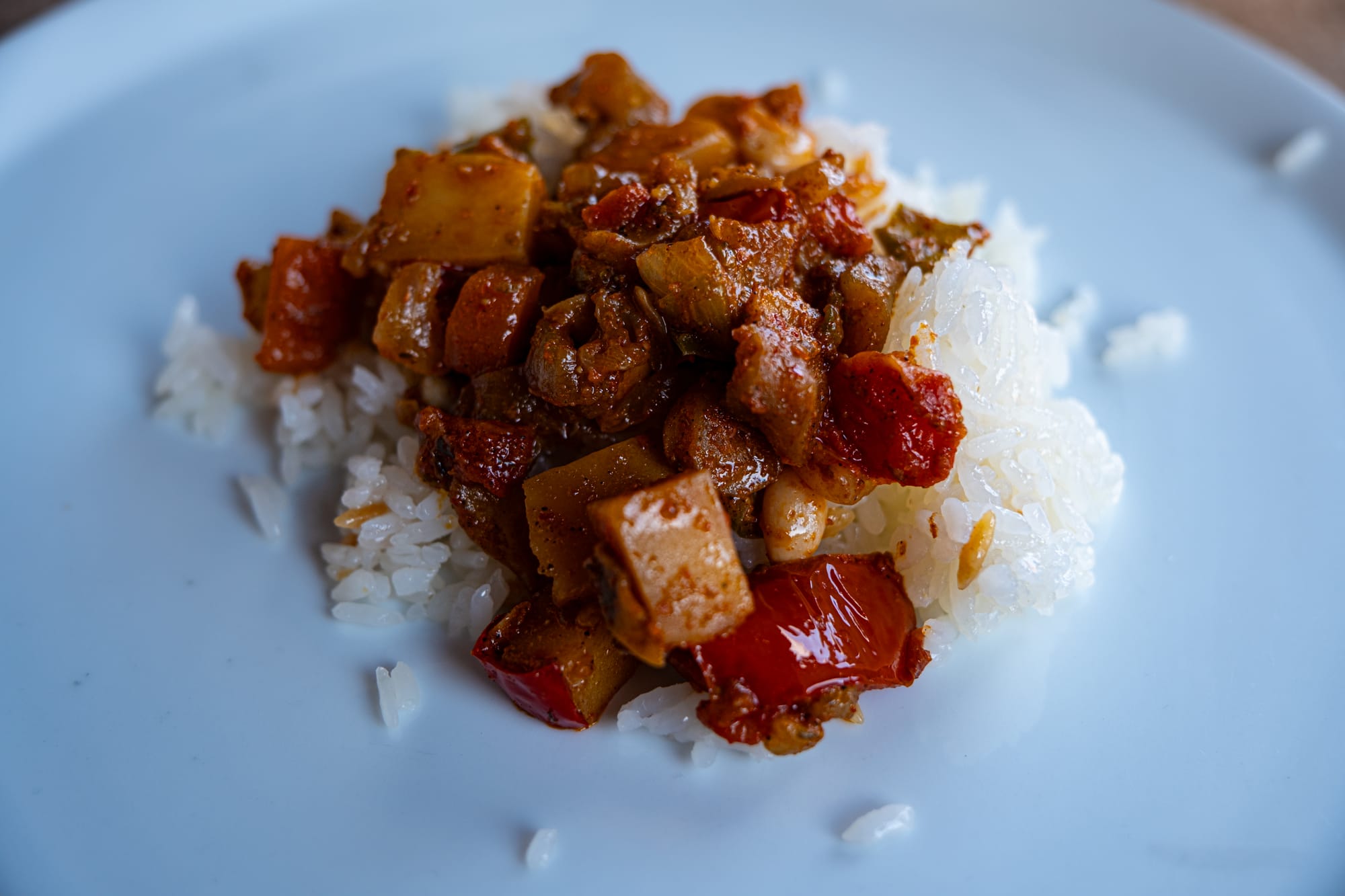
Eating it felt like more than just having a meal. It was a glimpse into a tradition, adapted with care, and shared with generosity.
If you're in the area, we highly recommend you visit for both the food and the lovely Bayram himself.
If you find yourself in Uçhisar, and especially if you’re staying nearby, drop into House of Memories, both for the food and the lovely Bayram himself. You'll need to reserve a clay pot in advance, so be sure to message him the morning of.






